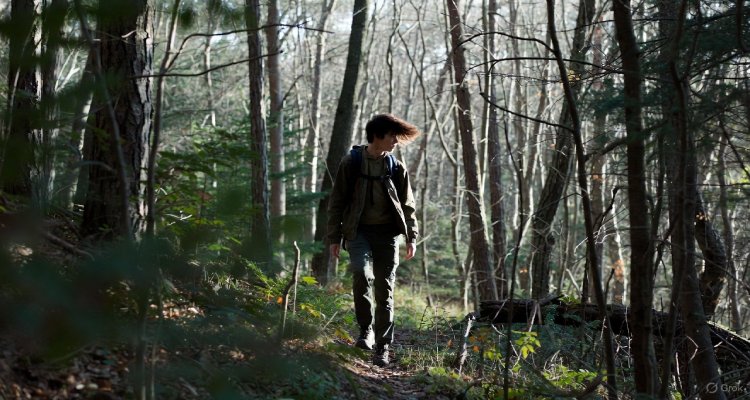Why Some Species Choose to Hide from Us Forever
Some species deliberately avoid human contact—discover the reasons behind this elusive behavior and what it reveals about evolution, survival, and human impact on ecosystems.
Introduction: The Vanishing Act of Nature
Deep in the heart of Earth’s wildest terrains—from the uncharted Amazon to the abyssal depths of the ocean—there exist creatures we’ve rarely, if ever, seen. Not because they are extinct or invisible, but because they choose to remain hidden. While some species dazzle in the spotlight of wildlife documentaries, others actively shun human presence, evolving in silence. But why would any species want to avoid being discovered? The answer lies in a delicate mix of survival strategy, ecological balance, and a growing mistrust of humanity.
Context & Background: A History of Elusiveness
Throughout history, nature has kept some of its secrets tightly sealed. From the mythical-sounding okapi, first spotted by scientists only in 1901, to the deep-sea coelacanth once believed extinct, many species defy human detection for centuries.
Some animals—like the snow leopard, saola (Asian unicorn), or the recently rediscovered Attenborough’s long-beaked echidna—exist at the fringes of human understanding. And when they are found, it’s often fleeting. Biologists refer to such creatures as “cryptic species,” not because they’re necessarily rare, but because they are experts in evasion.
Unlike domesticated animals or bold predators, these species develop behaviors and physical traits that help them stay undetected—camouflage, nocturnal activity, reclusive habitats, and minimal vocalization. But these traits aren’t coincidental—they’re evolution’s answer to a world increasingly dominated by humans.
Main Developments: The Role of Human Pressure
The primary driver behind this self-imposed exile is survival. For many animals, humans represent a dual threat: ecological and existential.
1. Habitat Encroachment: As cities expand and forests recede, once-remote habitats are disturbed. Many species respond by retreating even further into inaccessible zones or becoming strictly nocturnal.
2. Hunting and Poaching: Centuries of hunting—be it for food, sport, or trade—have taught wildlife a critical lesson: visibility equals vulnerability. Species like the Amur leopard or pangolins, heavily targeted by illegal wildlife trade, have grown more elusive over time.
3. Noise and Light Pollution: Even if not directly hunted, many species avoid areas affected by artificial noise and light. A 2020 study in Nature Ecology & Evolution found that light pollution alone significantly altered the behavior of dozens of mammal species, pushing them to avoid human-dominated landscapes.
4. Biological Adaptation: Some animals evolve physiological traits favoring stealth. For example, many cave-dwelling species lose pigmentation or eyesight over generations as they adapt to life in perpetual darkness—environments where human contact is nearly impossible.
Expert Insight: What the Scientists Say
Dr. Mariana Trillo, a wildlife ecologist at the University of British Columbia, explains,
“Elusiveness isn’t just a defense mechanism—it’s a survival strategy. These species have learned that remaining unseen is their best bet for avoiding extinction.”
Similarly, Dr. Alex Natt, a conservation biologist working in Southeast Asia, highlights,
“Many species are not endangered due to low numbers—but because of extreme behavioral adaptations that make them nearly impossible to study or conserve. We can’t protect what we don’t know exists.”
This has led to a growing field of “ghost biodiversity”—species known only through footprints, scattered DNA samples, or blurry camera-trap images.
Impact & Implications: The Cost of Invisibility
The choice to remain hidden comes with a significant downside—for both species and science.
1. Conservation Challenges:
Species that avoid detection rarely benefit from conservation funding. Without documented presence, it’s difficult to assess population health, threats, or needs.
2. Ecological Blind Spots:
These animals often play crucial roles in ecosystems—as pollinators, predators, or prey. Their absence from research skews our understanding of ecological webs and biodiversity.
3. Human-Driven Extinction:
Ironically, in trying to avoid humans, many of these species are pushed closer to extinction. A recent UNESCO report highlighted that nearly 80% of Earth’s biodiversity exists in unexplored or underexplored habitats, potentially harboring hundreds of undiscovered species already facing extinction due to climate change or land degradation.
Conclusion: The Paradox of Discovery
In a time where satellites map forests and AI monitors oceans, the fact that some species still evade us is humbling. It serves as a stark reminder that the natural world is vast, mysterious, and not ours to fully control.
For many species, hiding isn’t just instinct—it’s rebellion against a world that often equates discovery with destruction. If we ever hope to understand or protect them, we must first earn back their trust—not with flashlights or drones, but with quiet respect for the sanctity of their wildness.
Disclaimer: This article is based on current scientific literature and expert commentary. It does not promote interaction with or tracking of elusive wildlife, and encourages ethical conservation practices only.











